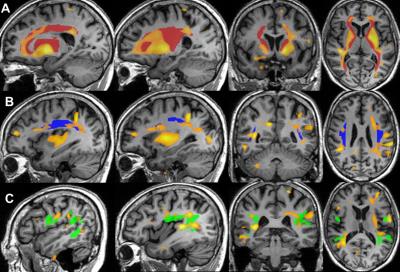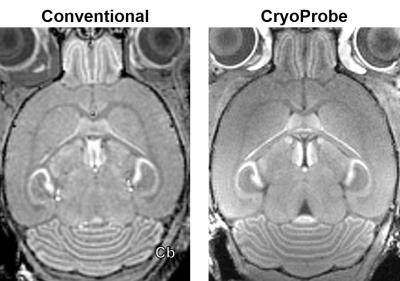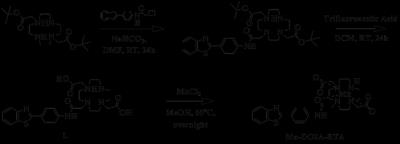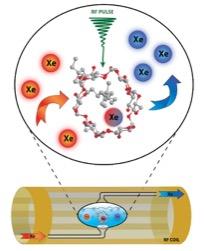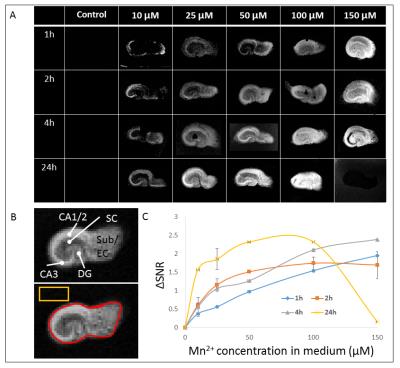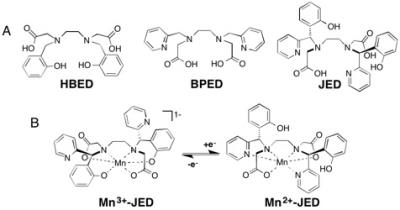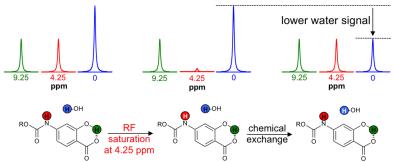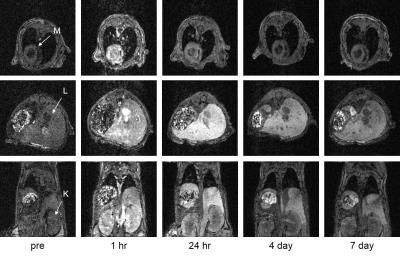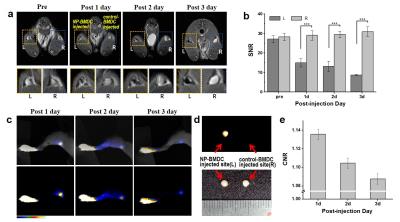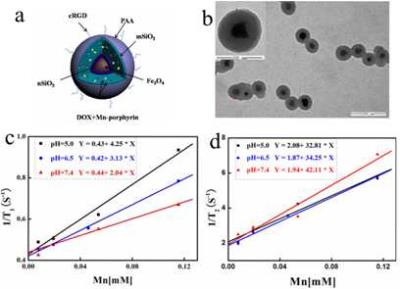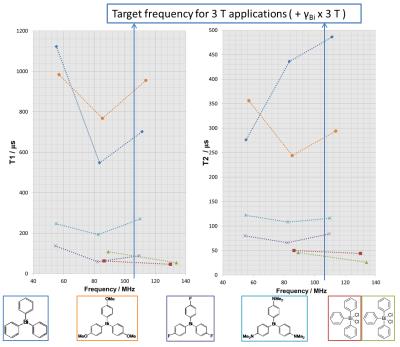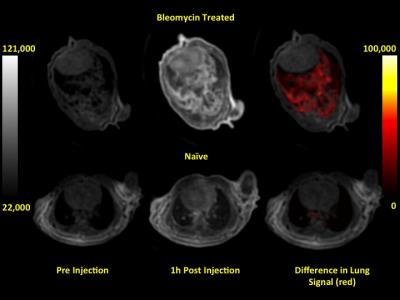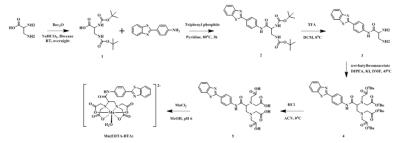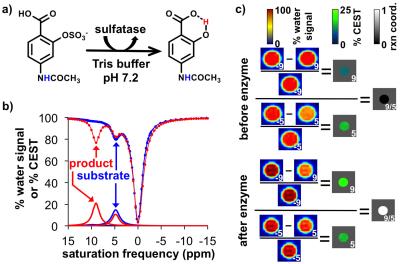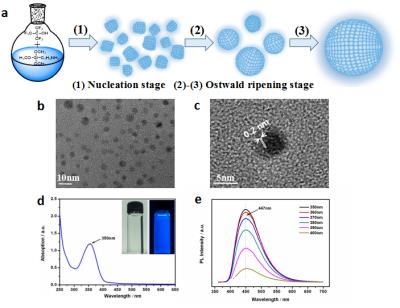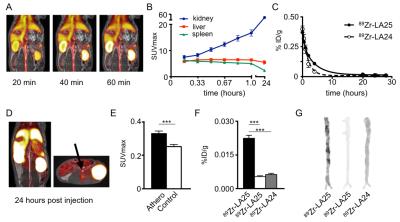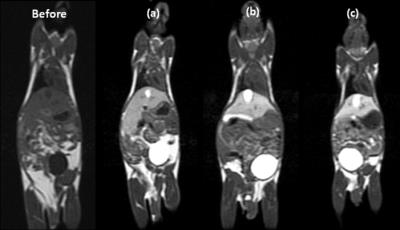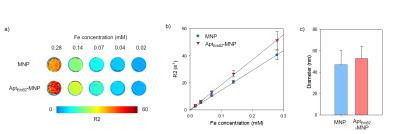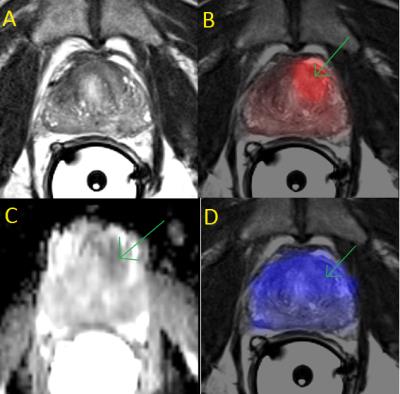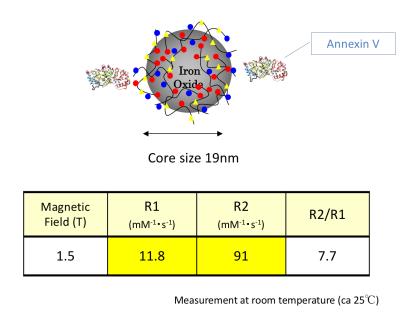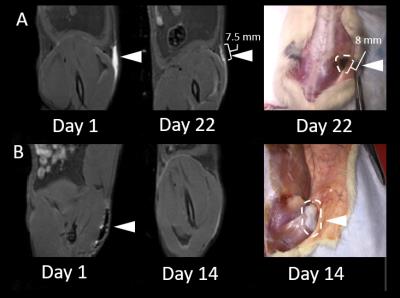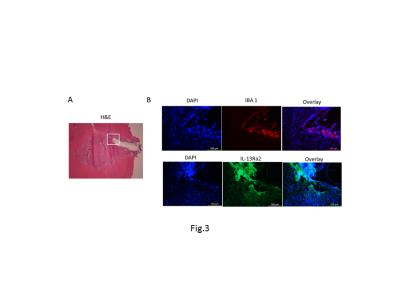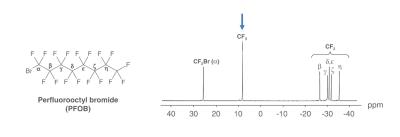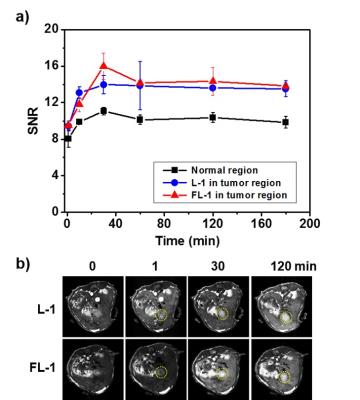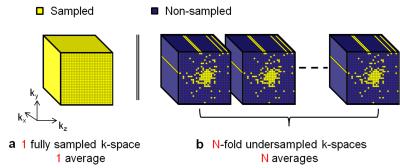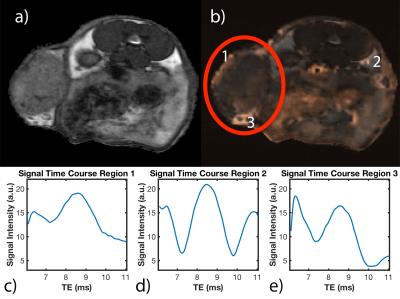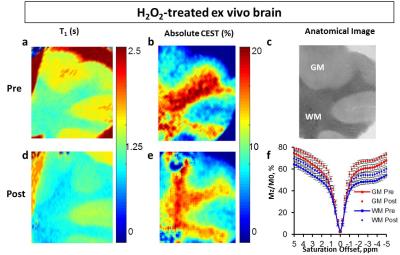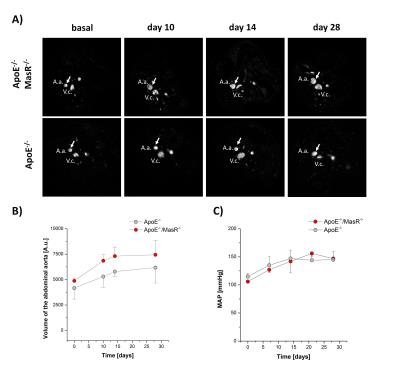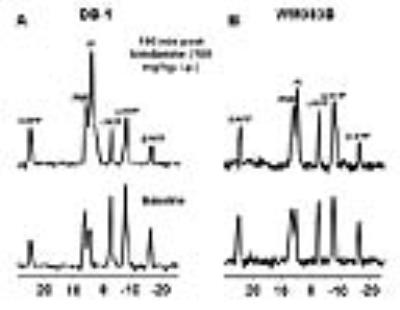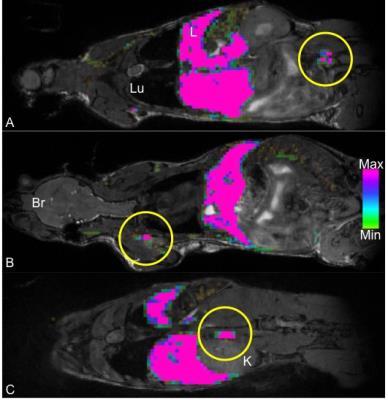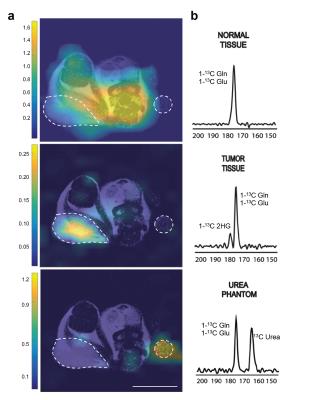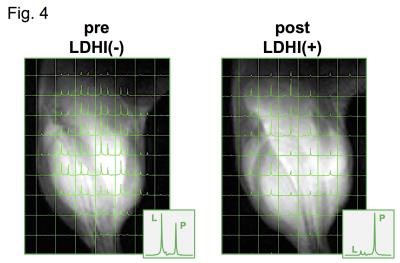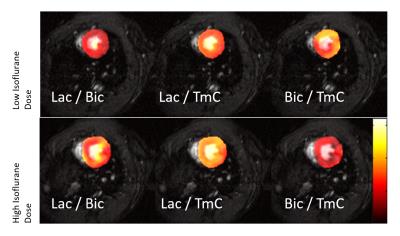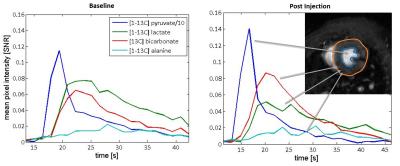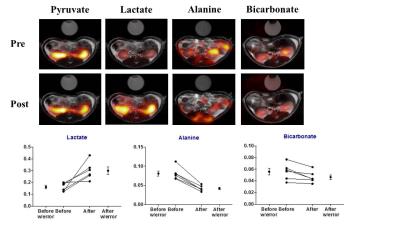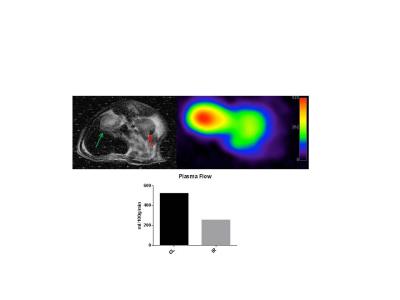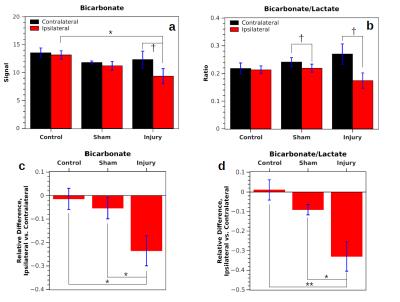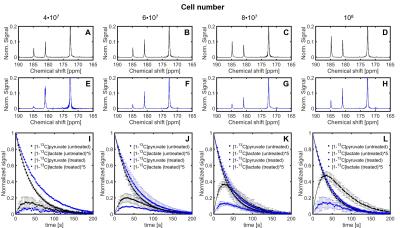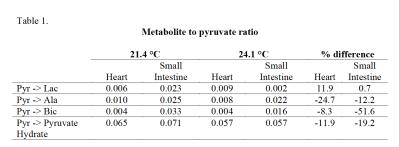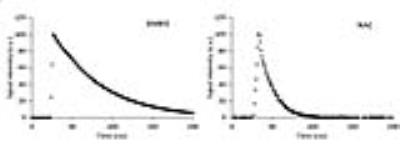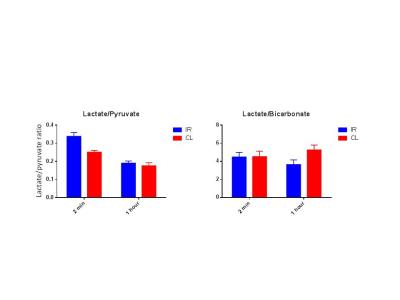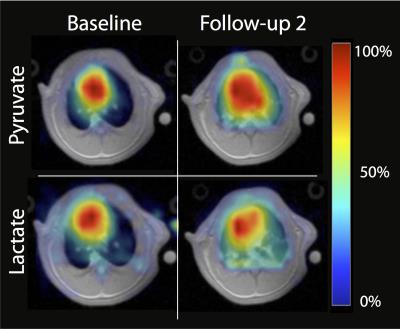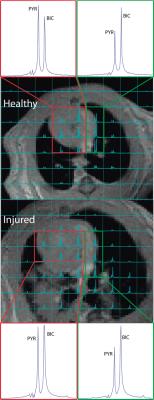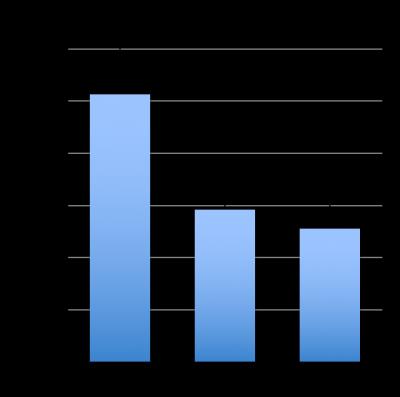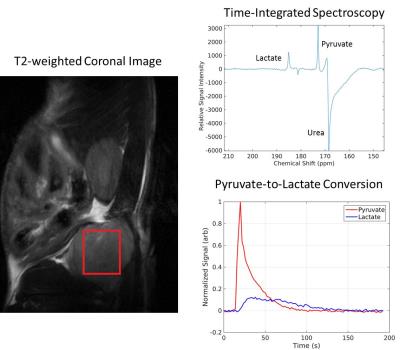Technical Developments in Hyperpolarized 13C MRI/MRS
Traditional Poster
Molecular Imaging
Thursday, 27 April 2017
| Exhibition Hall |
13:00 - 15:00 |
|
3032.
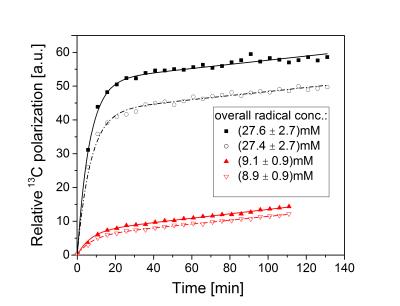 |
Hyperpolarization of 2-keto[1-13C]isocaproate for in vivo studies with photo-induced radicals
Steffen Frank, Hikari Yoshihara, Mor Mishkovsky, Arnaud Comment, Rolf Gruetter
Hyperpolarized 2-keto[1-13C]isocaproate (KIC) provides a means to probe brain nitrogen homeostasis and to assess molecular signatures of tumors. The dynamic nuclear polarization process requires a free-radical polarizing agent, and samples are typically doped with persistent radicals. An alternative is to use photo-induced radicals of α-keto acids that recombine upon dissolution. [1-13C]KIC hyperpolarized with photo-induced radicals could be used to measure the alterations in amino acid metabolism that are linked to neurodegenerative diseases and cancer, and the aim of the present study is to identify the main features that influence the polarization dynamics.
|
|
3030.
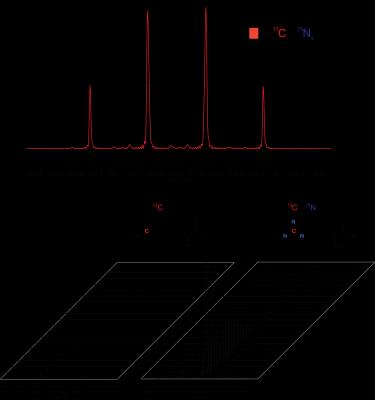 |
Hyperpolarized [6-13C,6-15N3]-Arginine as a Novel Probe to Interrogate Arginase Activity
Andrew Cho, Roozbeh Eskandari, Jason Lewis, Kayvan Keshari
Across most cancer types, increased macrophage infiltration is associated with a worsening prognosis. This is because tumor associated macrophages (TAMs) exhibit a variety of pro-tumor effects ranging from vascular recruitment, cell proliferation, extravasation, and immune suppression. A marker of TAMs is arginase-1 expression, which converts arginine to urea and ornithine. It is thought that arginase expression reduces the amount of arginine available to local T-cells, leading to T-cell receptor dysfunction. In this abstract, we outline the synthesis and characterization of novel compound [6-13C,6-15N3]-Arginine as a hyperpolarized 13C MRS probe to interrogate arginase activity, with the potential for in vivo translation.
|
|
3043.
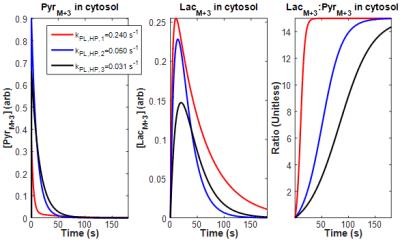 |
A Preliminary Framework for Validation of HP MRI using Mass Spectrometry
James Bankson, Keith Michel, Christopher Walker, Yunyun Chen, Jorge Delacerda, Charles Kingsley, Philip Lorenzi, Lin Tan, Stephen Lai
Dynamic imaging of HP pyruvate shows tremendous promise for offering new insight into tumor metabolism with unprecedented sensitivity, specificity, and spatiotemporal resolution. Imaging constraints due to the finite, nonstationary, and non-renewable signal pool necessitate the use of complex imaging and reconstruction strategies, but current approaches to validation of complex HP MRI measurements are lacking and new methods are critically needed. In this work, we investigate a framework for external validation of quantitative HP MRI biomarkers of tumor metabolism using stable isotope tracer analysis (MS-SITA). We show good agreement between quantitative biomarkers of chemical conversion derived from HP MRI and MS-SITA.
|
|
3042. 
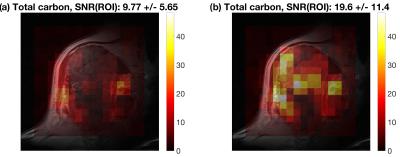 |
Characterization and flip angle calibration of 13C surface coils for hyperpolarization studies
Rie Hansen, Henrik Gutte, Majbrit Larsen, Annemarie Kristensen, Andreas Kjær, Jan Ardenkjær-Larsen, Adam Hansen
The aim of the present work is to address the challenge of optimal flip angle calibration of 13C surface coils in hyperpolarization studies. To this end, we characterize the spatial profile of the flip angle and demonstrate that it allows for a simple calibration improving the signal-to-noise ratio for hyperpolarized 13C magnetic resonance spectroscopic imaging.
|
|
3040. 
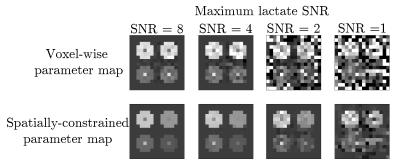 |
Spatio-temporally constrained reconstruction for hyperpolarized carbon-13 MRI using kinetic models
John Maidens, Jeremy Gordon, Murat Arcak, Hsin-Yu Chen, Ilwoo Park, Mark Van Criekinge, Eugene Milshteyn, Robert Bok, Rahul Aggarwal, Marcus Ferrone, James Slater, John Kurhanewicz, Daniel Vigneron, Peder Larson
We present a method of generating metabolism maps from dynamic hyperpolarized carbon-13 MRI images. By incorporating prior information into our model-based reconstruction via spatial regularization of the parameter maps, we achieve two qualitative benefits: elimination of non-identifiability in unperfused background regions, and denoising. This method is illustrated on a simulated dataset and a clinical prostate cancer dataset.
|
|
3034. 
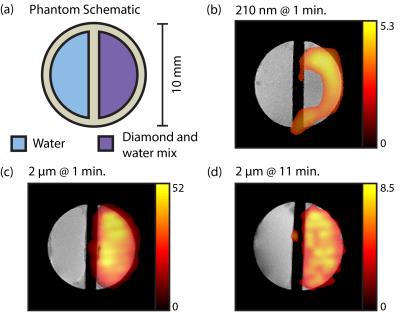 |
Nanodiamond Imaging with Hyperpolarized 13C MRI
David Waddington, Thomas Boele, Ewa Rej, Dane McCamey, Torsten Gaebel, David Reilly
Hyperpolarized 13C MRI leverages an over 10 000 times increase in the 13C polarization of biomolecules, enabling new molecular imaging applications. However, metabolic applications are limited to processes on the timescale of a minute by the short lifetime of the hyperpolarized signal. Here, we hyperpolarize nanodiamonds and microdiamonds to achieve large, long-lived 13C polarizations. We then image these particles in phantoms, demonstrating the potential of hyperpolarized nanodiamonds for imaging over long timescales. As nanodiamond has been established as a biocompatible platform for drug delivery, our results will motivate further research into hyperpolarized MRI for tracking nanoparticles in vivo.
|
|
3039.
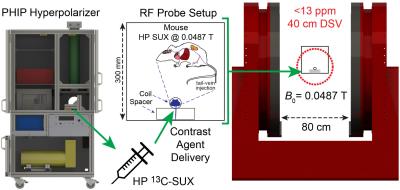 |
Resolving spin-spin couplings in hyperpolarized in vivo metabolic 13C spectroscopy at low magnetic field following murine tail-vein injection
Aaron Coffey, Matthew Feldman, Roman Shchepin, Milton Truong, Wellington Pham, Eduard Chekmenev
We demonstrate murine whole-body MRS and the ability to resolve the 13C multiplet of hyperpolarized 1-13C-succinate-d2 in a biplanar magnet with B0 = 0.0487 T and inhomogeneity <13 ppm over 40 cm DSV. At low magnetic field strength no loss of SNR relative to high field for a well-designed radiofrequency coil occurs, but chemical shift dispersion is potentially insufficient to differentiate hyperpolarized metabolites and contrast agents. However, at sufficiently low field strength, magnetic susceptibility derived B0 field inhomogeneity in vivo becomes negligible. Consequently, direct spectroscopic resolution of spin-spin couplings or J-couplings, more commonly performed near zero field, becomes feasible.
|
|
3033.
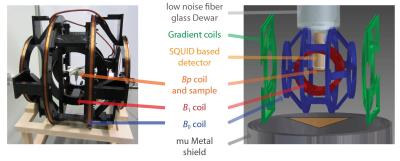 |
SQUID-based ultralow field nuclear magnetic resonance spectroscopy using the para-H2 based hyperpolarization technique SABRE
Kai Buckenmaier, Matthias Rudolph, Christoph Back, Joern Engelmann, Juri Rudin, Tomasz Misztal, Ute Bommerich, Klaus Scheffler, Dieter Koelle, Reinhold Kleiner, Hermann Mayer, Johannes Bernarding, Markus Plaumann
SABRE is a technique to achieve continuous hyperpolarization for MR measurements by the interaction of para-hydrogen and a substrate via steady ligand exchange on a catalyst. Thus, MR-active nuclei can be hyperpolarized more than only once. At field strengths of mT Faraday coils, commonly used in conventional or high field MRI, become insensitive and SQUIDs performing superior. Since SQUIDs are broadband detectors, the static magnetic field B0 can be changed easily or multiple nuclei can be measured simultaneously. Here, we successfully demonstrate the advantages of a SQUID based system by showing significant signal enhancement (1H, 19F) by hyperpolarization of 3-fluoropyridine.
|
|
3037. 
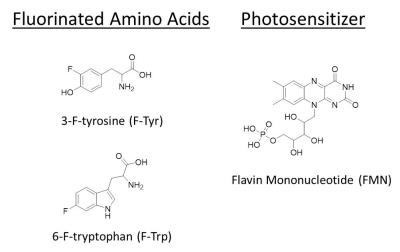 |
Simultaneous Visualization of Hyperpolarized Fluorinated Amino Acids by Multi Chemical Shift Selective 19F MRI
Tuba Güden-Silber, Jürgen Schrader, Ulrich Flögel
We demonstrate the induction of 19F photo-chemically induced dynamic nuclear polarization (photo-CIDNP) in 19F MR imaging experiments. To this end, we made use of laser-induced hyperpolarization in a system consisting of flavin mononucleotide as a photosensitizer and the fluorinated aromatic amino acids tyrosine and tryptophan, respectively. The induction of 19F photo-CIDNP led to an extensive 19F signal enhancement which could be exploited for simultaneous imaging of both amino acids by 19F multi chemical shift-selective imaging within 20 s. Hence, our approach resulted in a substantial improvement of the intrinsically low 19F MR sensitivity for mono-fluorinated amino acids.
|
|
3035. 
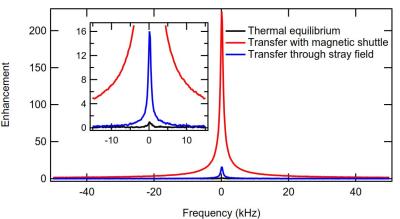 |
Transport of Hyperpolarized Nanodiamonds
Thomas Boele, David Waddington, Ewa Rej, Torsten Gaebel, David Reilly
Hyperpolarized 13C MRI using nanodiamond (ND) holds the potential for tailored diagnostic imaging combined with targeted drug delivery in the human body. An obstacle to realizing this potential is the transfer of hyperpolarized ND from the hyperpolarizer to the patient without losing the majority of the 13C polarization as it travels through low magnetic fields before reaching the MRI scanner. We demonstrate that polarization loss is highly dependent on magnetic field and construct a system of transfer magnets that improves the transfer efficiency of our hyperpolarized ND by more than an order of magnitude.
|
|
3041. 
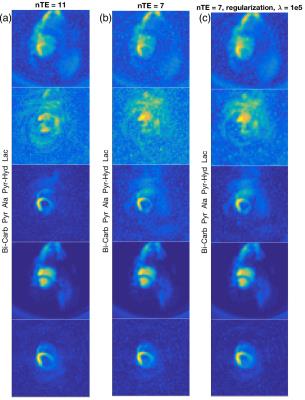 |
Improved reconstruction for IDEAL spiral CSI
Rie Hansen, Christian Mariager, Christoffer Laustsen, Rolf Schulte, Jan Ardenkjær-Larsen, Lars Hanson
In this study we demonstrate how reconstruction for IDEAL spiral CSI (spectroscopic imaging scheme developed for hyperpolarized dynamic metabolic MR imaging) can be improved by using regularization with a sparsity constraint. By exploiting sparsity of the spectral domain, IDEAL spiral CSI can achieve chemical shift encoding by acquisition of only few time-shifted echoes. The minimum number of echoes required to avoid noise amplification can be decreased by means of regularization enforcing spectral sparsity, hereby reducing scan time. Improvements achieved by using regularized reconstruction are demonstrated for in vivo data from a hyperpolarized cardiac study of a pig.
|
|
3036.
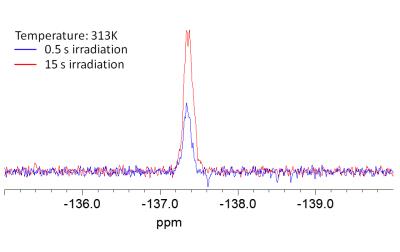 |
photo-CIDNP for 19F MR amino acid-protein interaction studies in physiological solvents
Frederike Euchner, Markus Plaumann, Thomas Trantzschel, Joachim Bargon, Ute Bommerich, Johannes Bernarding
Fluorinated amino acids are of high interest in biochemistry and pharmaceutics. The low 19F MR signal was increased employing hyperpolarization (photo-Chemical Induced Dynamic Nuclear Polarization, photo-CIDNP). 3-Fluoro-tyrosine in physiologic salt solution was hyperpolarized in presence of an albumin derivative using a low cost LED allowing repetitive irradiation and increasing the hyperpolarized signal. A clear 19F signal enhancement could be observed. In comparison to past examinations with a laser system, only small temperature changes caused by LED light irradiation were measured in the current study.
|
|
3045.
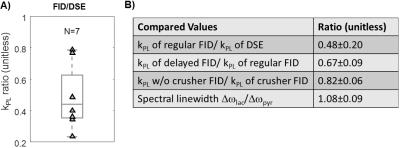 |
Practical Considerations of Quantitative kPL Estimation in Hyperpolarized-13C Imaging in Response to Pulse Sequence Design and Parameters
Hsin-Yu Chen, Jeremy Gordon, Robert Bok, Peng Cao, Cornelius von Morze, Eugene Milshteyn, Ralph Hurd, John Kurhanewicz, Peder Larson, Daniel Vigneron
Hyperpolarized-13C MRI has recently enabled imaging of cancer pathophysiology with high spatiotemporal resolution in humans. Quantitative measure of tumor metabolism can be made possible by estimating conversion rate constants (e.g. kPL for pyruvate-to-lactate). We have identified 3 systematic sources affecting kPL estimation that were introduced by MR acquisition and pulse sequences – an RF-spoiling effect, a T2*-weighting factor, and a crusher flow-suppression phenomenon. These sources were investigated using a transgenic cancer model and simulations.
|
|
3031. 
 |
Hyperpolarization of [4-13C]5-aminolevulinic acid
Stephen DeVience, Graeme Woodworth, Joseph Kao, Dirk Mayer
We performed the first DNP hyperpolarization of 13C-labeled 5-aminolevulinic acid (5-ALA), achieving 13% polarization at dissolution and measuring a T1 of 20 s. 5-ALA is used for fluorescent imaging and photodynamic therapy of glioblastoma, and our results suggest it is also a promising substrate for hyperpolarized metabolic imaging of this cancer.
|
|
3038.
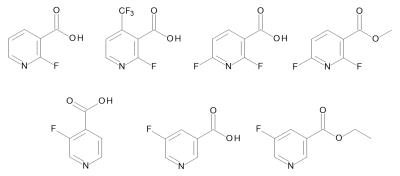 |
Examination of the hyperpolarizability of fluorinated nicotinic acids and further pyridine carboxylic acids using SABRE
Markus Plaumann, Frederike Euchner, Rainer Ringleb, Sara Hadjiali, Joachim Bargon, Gerd Buntkowsky, Johannes Bernarding, Ute Bommerich
Nicotinic acid and isonicotinic acid are two derivatives of pyridine carboxylic acids. Both substrates are of high interest in medical chemistry. In the current study seven fluorinated derivatives of these pyridine carboxylic acids were chosen for examination of the 1H and 19F hyperpolarizability using the SABRE technique. Influences of the position of the carboxylic group and fluorine as well as the catalyst system concerning the achievable signal enhancements were examined. Furthermore an H/D-exchange could be observed in some cases. The presented data gives important information for future MR imaging studies.
|
|
3044. 
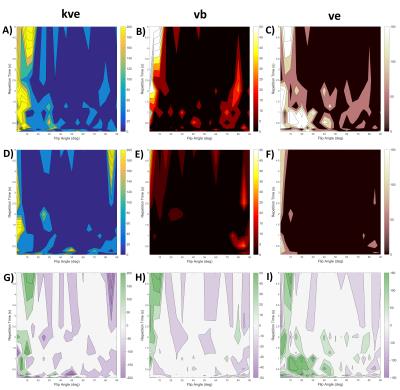 |
Simulation of Hyperpolarized Perfusion MRI with a Segmented Snapshot Acquisition
Keith Michel, Christopher Walker, Yunyun Chen, Jorge Delacerda, Stephen Lai, James Bankson
Metabolically inert hyperpolarized tracers can be used for perfusion measurements in vivo. In this work we present a simulation study to compare the performance for measurement of tissue perfusion of a conventional imaging approach to a segmented snapshot acquisition where each segment ends with a 90 degree RF pulse.
|
|
3046. 
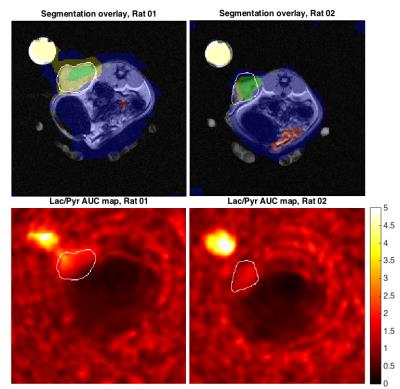 |
A fuzzy Markov random field approach for the unsupervised segmentation of hyperpolarized 13C MRI data
Charlie Daniels, Ferdia Gallagher
MRI with hyperpolarized 13C-labelled compounds is an emerging clinical technique allowing in vivo metabolic processes to be characterized non-invasively. Accurate quantification of metabolism requires a region-of-interest to be defined, which is usually based on spatial information only. However, as the hyperpolarized data is 5-dimensional (spatial, temporal and spectral), it offers the possibility of applying novel segmentation methods to more accurately define this region-of-interest. A novel solution to the problem of 13C image segmentation is proposed here, using a hybrid Markov random field model with fuzzy logic. Performance of the algorithm is demonstrated using in silico and in vivo data.
|
|



















